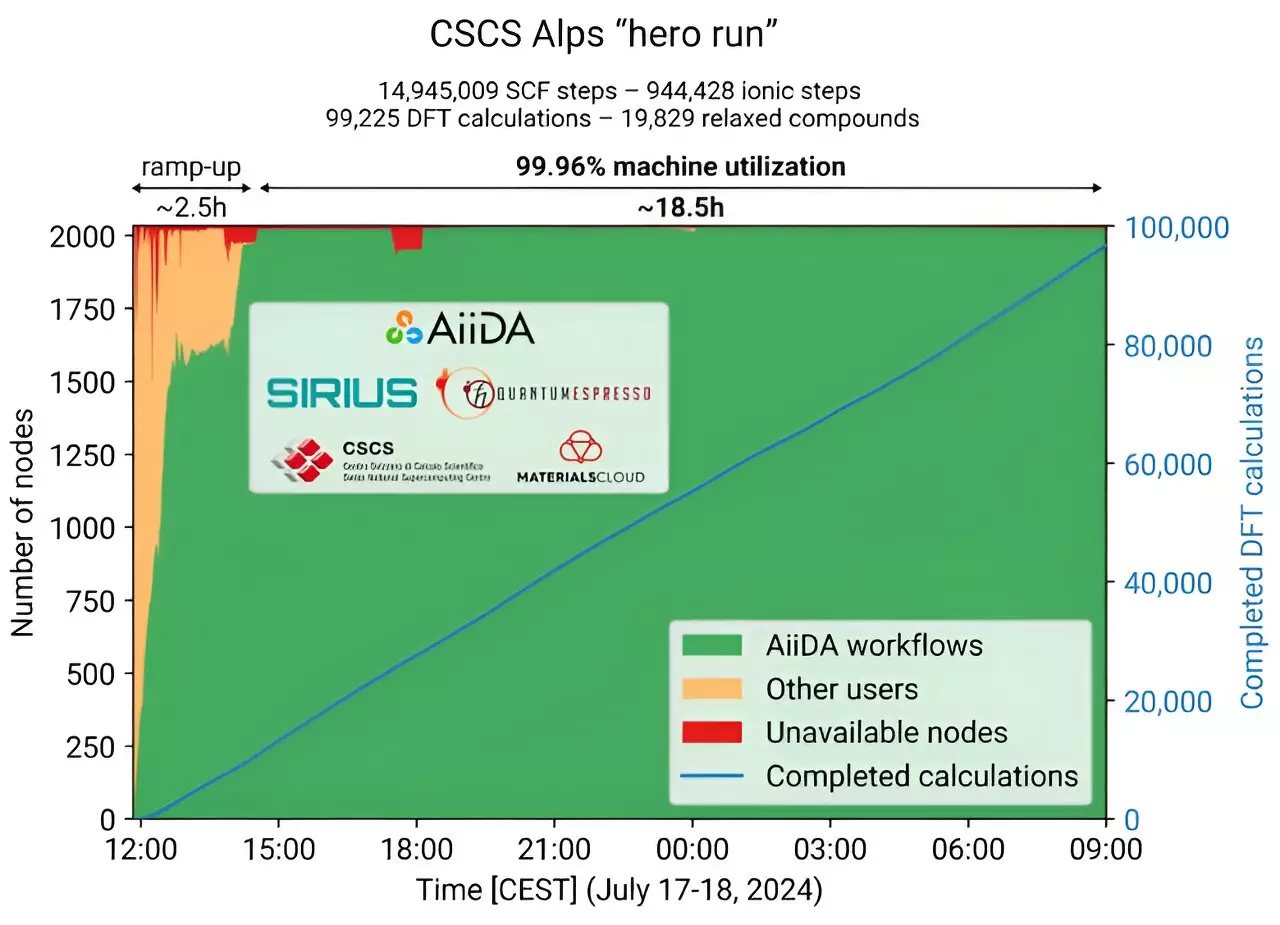In a remarkable feat that underscores the advanced capabilities of computational materials science, a team from the Swiss National Center of Competence in Research (NCCR) MARVEL completed an unprecedented computational marathon. This remarkable effort took place on the newly inaugurated Alps supercomputer, introduced to the scientific community on September 14, 2024. The Alps supercomputer stands as one of the most powerful supercomputers in the world, providing researchers access to next-generation computational power. Operated by the Swiss National Supercomputing Center (CSCS), this geo-distributed infrastructure primarily resides in Lugano and a few other locations, significantly expanding the research capabilities available to scientists and engineers.
This initial access phase was selectively granted to various research groups, including Giovanni Pizzi’s team that is part of the Laboratory for Materials Simulation (LMS) at the Paul Scherrer Institute (PSI) and operates under the leadership of Nicola Marzari. Their primary focus revolves around leveraging computational methods to discover innovative materials with diverse applications, a task that relies heavily on high-performance computing.
On July 17-18, the team embarked on what is referred to in the scientific community as a “hero run.” This term denotes a designated time frame in which a supercomputing platform is allocated entirely to a single user or research group, enabling them to maximize the use of the system’s computational resources. The team, comprising key members of Pizzi’s group—Marnik Bercx, Michail Minotakis, and Timo Reents—sought to demonstrate the efficiency of their computational platform, AiiDA, in conjunction with the formidable power of the Alps system.
The objective was clear: validate AiiDA’s capability to manage extensive computational workflows while utilizing the Alps supercomputer to its full potential. They aimed to run high-throughput calculations that would enable the simultaneous assessment of numerous materials stored in a database. This computational strategy not only streamlines the research process but also allows experimental scientists to focus on the most promising materials for real-world applications, like the development of next-generation batteries.
As the team prepared for their ambitious task, they utilized an enhanced version of the widely recognized Quantum ESPRESSO code, optimized through the Sirius library, another innovation developed within the NCCR MARVEL framework. This combination allowed for the optimized operation of the Alps supercomputer’s graphics processing units (GPUs), implementing sophisticated algorithms designed to improve the accuracy and success rates of simulations significantly.
Once the green light was received from CSCS around midday, the team began submitting their input files to the Alps supercomputer. The scheduling software proficiently distributed the workload across the supercomputer’s impressive 2033 NVIDIA Grace Hopper nodes, equipped with a staggering array of GPUs and CPU cores. Meanwhile, AiiDA actively monitored each job, facilitating a seamless workflow that ensured calculations could be efficiently executed and maintained.
Despite the unusual hours and strain of working through the night, AiiDA’s system empowered the researchers to effectively manage their internal processes, even allowing for short rests. Bercx noted the consistent performance and stability of the supercomputer’s nodes, which reflected the superior quality of the infrastructure and its management. With a remarkable 99.96% utilization rate, this achievement epitomized the overarching goals of NCCR MARVEL: the cutting-edge discovery of materials through the abilities offered by modern computational frameworks and infrastructures.
The results were astounding—the team managed to conduct nearly 100,000 calculations in a span of just 16 hours. They focused on the properties of around 20,000 distinct crystal structures, choosing medium-sized configurations to maximize efficiency. The breadth of calculations encompassed a range of electronic properties, geometric configurations, and even new pseudopotentials, thus enriching their database and bolstering the accuracy of their findings.
The implications of this hero run extend well beyond the immediate results. The data generated will be made available as FAIR (Findable, Accessible, Interoperable, and Reusable) and open data, contributing to the Materials Cloud, a prominent online platform for shared scientific research. This step not only augments the MC3D array of inorganic crystal structures but significantly enhances collaborative prospects for researchers dedicated to materials science.
Overall, the successful completion of the hero run not only highlights the synergy of computational resources available through cutting-edge supercomputing but also sets a benchmark for future endeavors in computational materials science. As Pizzi astutely pointed out, this run compressed an impressive amount of computational work—equivalent to an entire year’s worth of resource allocation for traditional supercomputing projects—into less than a day, paving the way for accelerating research methodologies in the quest for novel material discoveries.

